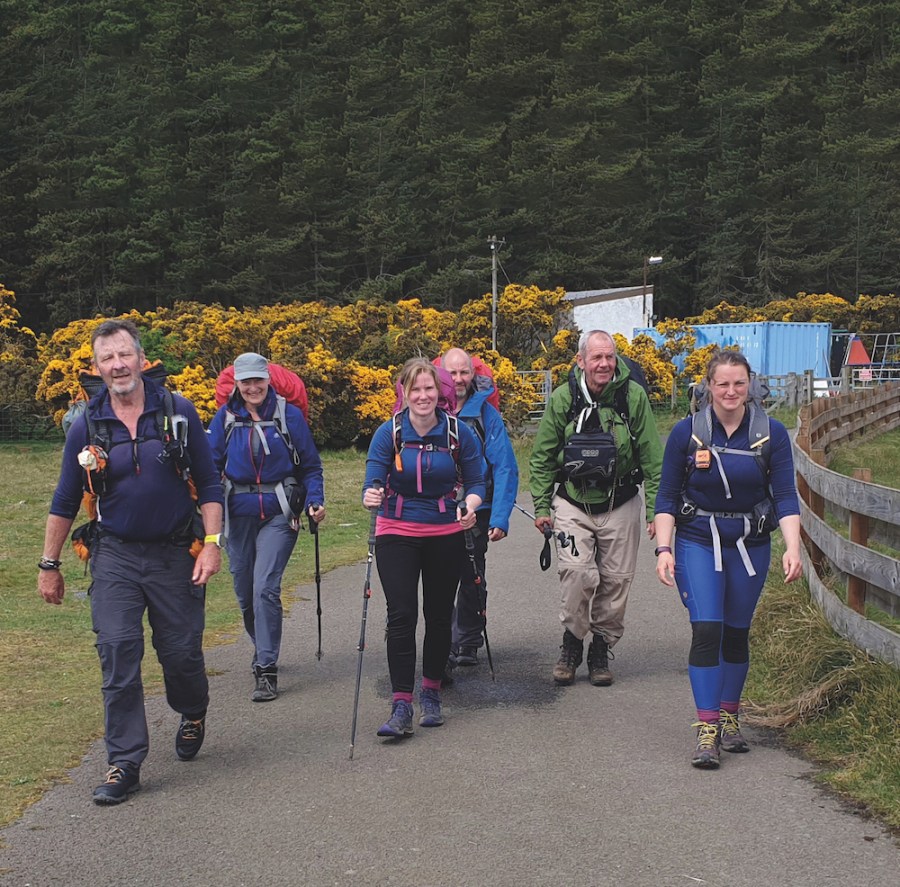Walking with the right people can make or break a long-distance walk. TGO Challenge coordinators Sue Oxley and Ali Ogden look at what makes for good company in the outdoors.
We have both walked solo and with other people on various backpacking excursions, including the TGO Challenge. There are certainly benefits. To arrive together at the summit of a hill after a long slog and find a panoramic view or a spectacular cloud inversion are occasions which are wonderful to share. To toast an exceptionally good, high campsite at the end of a hard day with a dram of whisky creates joint memories that are reminisced on for years to come.
Equally, when the going gets tough, it can lift the spirits to have someone to banter with; when someone has an ‘off’ day, others with them can jolly them along, in the knowledge that this is likely to be reciprocated at some future point along the way. Certainly, when things are not going well or the weather deteriorates and accurate navigation is required, or when you are confronted with a lively burn to cross, it is useful to be able to discuss the situation and make good decisions. There is, of course, the safety aspect of having one or more companions, should there be an incident where help is needed.
Practice makes perfect
If, say, two friends decide they are going to embark upon a long distance walk together, we would say it is essential that they have had some practice before hand. Walking with someone else always involves a degree of compromise and often patience from both parties regarding what pace you walk at, how frequently you stop and for how long, what time you get started, and a myriad of other minor issues, which if not considered can soon become more major. We have seen walking friends fall out in the middle of a trek all too often. You generally become aware of when the other person just wants some quiet time and you should be able to walk in companionable silence sometimes for hours at a time.
Sharing the load
There is then the subject of what equipment is ‘communal’. In the days when everything was much heavier, sharing the load made more sense. These days, with lightweight gear, it is less of an issue. We have never shared a tent or a stove when we have backpacked with other people; we have always been self-sufficient. That way, in the event of either of you stopping for whatever reason, the other person can continue without any problem.
From a practical point of view, for personal space at the end of the day, it is worth carrying the weight of a small tent. In driving rain, it is hard enough to manoeuvre with one person in a tent, doubly hard with two and a load of wet gear. If you have to get up and out in the middle of the night, it doesn’t involve you disturbing anyone else. Sometimes, when you get to camp, you just might want to sprawl in your tent and do absolutely nothing for an hour or so.
We know backpackers do share tents and manage perfectly well; it just needs some consideration and thought about how you deal with it before you have to do it in earnest. In our case, if something amiss should happen to one of our tents or stoves, we have another!
Together or alone?
We both enjoy solo backpacking, but we can equally say we have enjoyed our expeditions together and with others; they are just different. Either way, it is about getting out into the outdoors, enjoying the good times, coping with challenges, and making memories that you will look back on for a long time.
Read more about the TGO Challenge in the April issue of The Great Outdoors.







